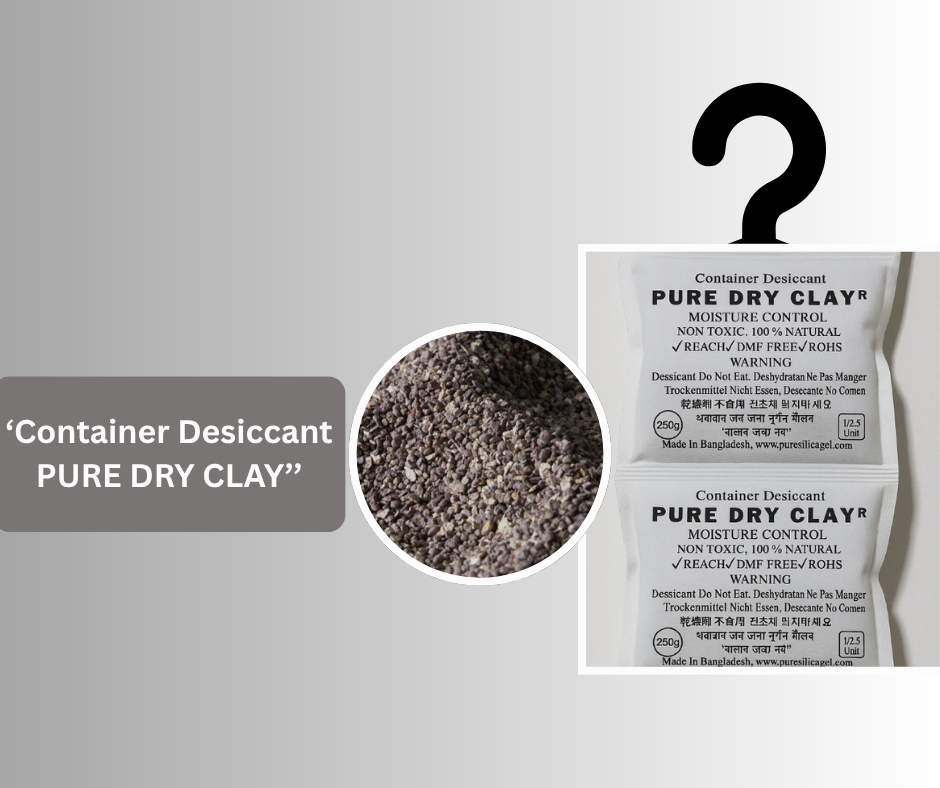PURE DRY CLAY® Container desiccants are used to protect goods from moisture inside a shipping container. Pure Silica Gel Packaging provides the best quality desiccant for containers.

Pharmaceutical and Food Industries: Used to preserve the integrity, potency, and shelf life of medicines, vitamins, and food products by preventing moisture degradation, caking, and microbial growth.
Electronics: Safeguards delicate electronic components, such as circuit boards, from corrosion and short-circuiting caused by moisture during manufacturing, shipping, and storage.
Logistics and Shipping: Placed inside shipping containers to combat “container rain” and ensure that goods, from textiles to machinery, arrive at their destination in optimal condition.
Automotive: Protects automotive parts and components from rust and corrosion during storage and transport.
General Packaging: Commonly found in consumer goods like shoes, leather bags, and cameras to prevent mold, mildew, and moisture damage.”

Container rain (also called container sweat) is a serious problem in global shipping. It happens when moisture inside a shipping container condenses into water droplets on the ceiling and walls.
Moisture-absorbing bags (e.g., calcium chloride or DRY CLAY) can dramatically reduce interior humidity, protecting goods even over long voyages.

Depends on container size, cargo type, and voyage duration.
Example: For a 20 ft container, typically 8–12 kg of desiccant is recommended.
For a 40 ft container, about 16–24 kg of desiccant is needed.
More is required for humid cargo (coffee, rice, wooden furniture, textiles, pharmaceuticals).

Copyright © 2025 All Rights Reserved.